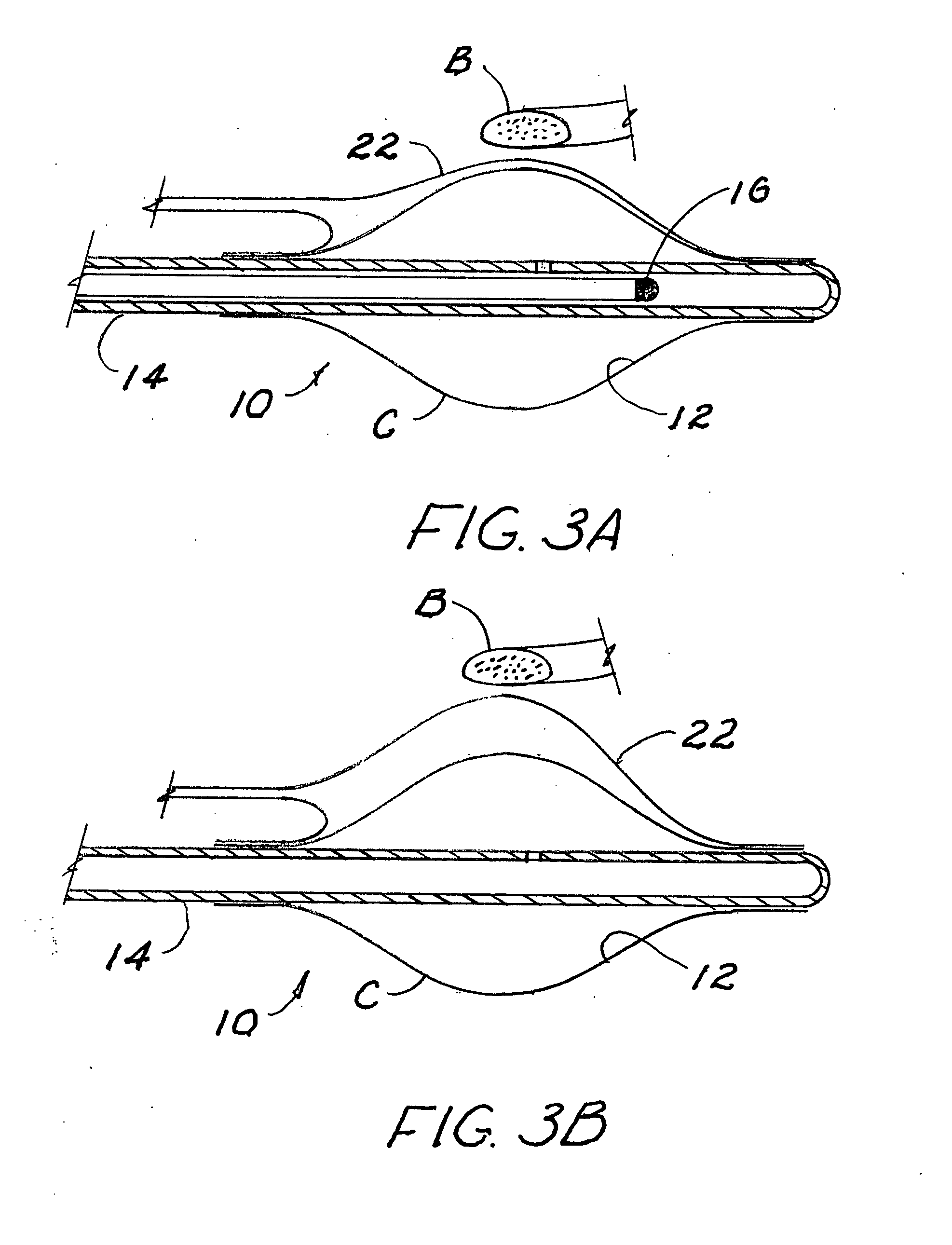Method and apparatus for modifying distance from a brachytherapy radiation source to sensitive anatomical structures
- Summary
- Abstract
- Description
- Claims
- Application Information
AI Technical Summary
Benefits of technology
Problems solved by technology
Method used
Image
Examples
Embodiment Construction
[0030]In the drawing figures and the descriptions which follow, the balloons of the applicator embodiment are shown and described schematically in that balloon walls and membranes are generally represented by one line. It is preferable that the balloons be inflated with water or water-like liquid as described above. In addition to simplifying dose planning, control of inflated shapes can be substantially obtained by filling each chamber to a specified volume. Alternatively, however, inflation can be by gaseous medium with the desired shape control obtained by pressure control, perhaps verified by conventional imaging techniques, including x-ray where the balloon element materials are doped with radio-opaque fillers like barium sulfate or bismuth bicarbonate to enhance their display on x-ray film.
[0031]FIG. 1 schematically shows in section, an applicator 10 having a primary balloon 12 with a concentric radiation source guide tube 14 having a radiation source 16 inside, mounted on the...
PUM
 Login to View More
Login to View More Abstract
Description
Claims
Application Information
 Login to View More
Login to View More - R&D
- Intellectual Property
- Life Sciences
- Materials
- Tech Scout
- Unparalleled Data Quality
- Higher Quality Content
- 60% Fewer Hallucinations
Browse by: Latest US Patents, China's latest patents, Technical Efficacy Thesaurus, Application Domain, Technology Topic, Popular Technical Reports.
© 2025 PatSnap. All rights reserved.Legal|Privacy policy|Modern Slavery Act Transparency Statement|Sitemap|About US| Contact US: help@patsnap.com



